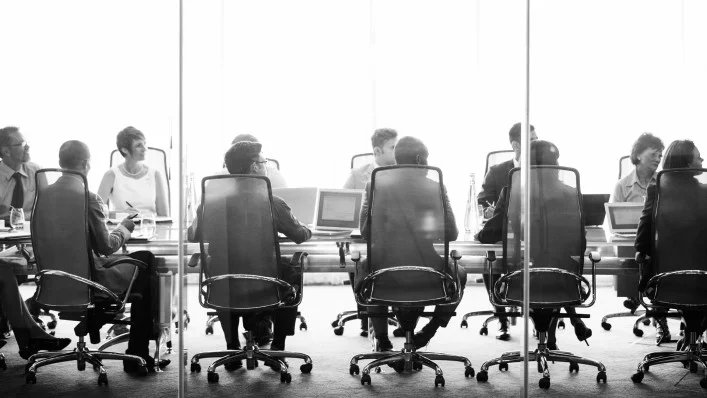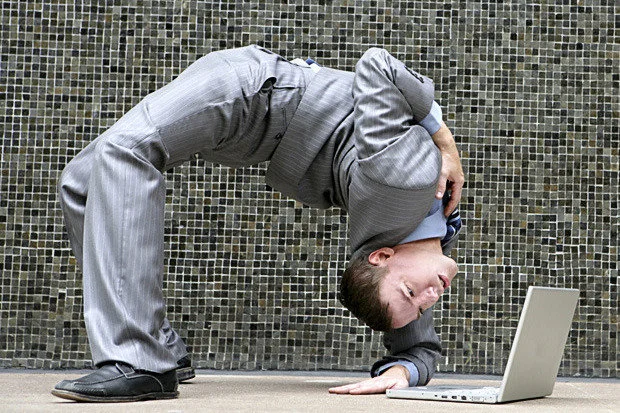Being a good facilitator isn’t the same as knowing how to manage people or run a meeting. It all comes down to understanding the tools–and structure–that help people collaborate.
It’s the workplace, but not as we know it
Stimulated by the growth of the Internet of Things (IoT), robotics and wider technological advances, office buildings will undergo radical change and become more crucial than ever to commercial success.
Microsoft and Steelcase Launch Partnership in Asia Pacific
Creativity is not just for artists or people who’ve studied under someone deemed creative. The ability to creatively solve problems is an innate human quality everyone shares. The question is: How do organizations help unlock people’s creative potential?
Circular Economy: The ‘Invisible Now’
The future we are preparing for may be closer than we think. Circularity is a lens to inspire business model expansion and transformation.
Stores Are Not Town Squares
Without the budget or political support to create new public spaces in cities, it’s no surprise that corporations have stepped in.
Workplace flexibility: Your key to hiring and retaining the best
If you want to hire and retain the best tech talent, you have to be flexible. Workplace flexibility is fast becoming a must-have perk for candidates and employees alike; it’s even more important than healthcare.
Strategizing the Workplaces of Tomorrow
Great workplaces are driven by a shared vision—the blend of an organization’s culture and a strategy for how people can do their best work. This shared vision inspires people to thrive, and as a result their organizations thrive. Placing the wellbeing of people at the core can create a happier and more productive workforce, increasing the chances for people to succeed within the organization’s culture and “live out” the vision.
Gartner: Digital workplace shifts required buy-in from across lines of business
Digital workplace leaders need to put a framework in place to ensure digital workplace initiatives succeed, according to a new report from Gartner.
Remote workers perceived as less valued by management than office based staff
“Remote workers don’t have a physical presence in the office, so their colleagues may be under the impression that they bring less to the table or aren’t a member of the team, even though that’s often not true.”
The Future of Work [Infographic]
In 2027, human beings will still be at the center of work, even as intelligent software and machines become our co-workers. Gartner analysts outline six assertions for work in 2027 to fully prepare CIOs on how to ride those assertions to greater business and personal success.
Neuroscientists have figured out why you can’t concentrate at work
Even though most people think about themselves as primarily visual beings, neuroscience reveals a complex “connectome” of brain cells that connects all of our senses. Try writing a report in a noisy, uncomfortable place with the smells of the office microwave wafting over to your desk, and the importance of other senses becomes clear.
What “Game of Thrones” gets wrong about seating and power, according to a chair design critic
One thing that the Iron Throne does get right: It has a backstory. The throne was forged from the swords of long-ago defeated enemies. Indeed, thrones frequently derive their magical potency from ancient roots.
This is how responsive office design affects human behavior
While offices with open-concept floorplans have become increasingly popular, some studies show they can be difficult to navigate for introverts, and can hamper concentration. Truly productive workspaces pair “quiet zones” designed for privacy and focus with open spaces that foster collaboration. These choices empower employees to work in whatever space is most productive for them.
What we Learned about Learning Styles and their Impact on Workplace Design
Pointing out that the boundaries between learning and work should be investigated and considered as designers are constantly being challenged to develop space that supports “new ways of working.” Understanding learning style can perhaps be a tool to translate into better and more supportive workspaces.
Q+A with IDEO: Six Critical Innovation Qualities
For more than two decades, IDEO has been helping organizations come up with industry-leading breakthrough ideas — famously designing the first manufacturable mouse for Apple. Now, the global design and consulting firm is providing teams with a new tool. The Creative Difference tool measures six qualities IDEO describes as critical to innovation.
Despite the rise of remote work, the symbolic importance of offices will live on
For centuries people have been getting up, joining a daily commute or retreating to a room, to work. The office has become inseparable from work.Its history illustrates not only how our work has changed but also how work’s physical spaces respond to cultural, technological, and social forces.
Mobilizing the Workplace to Attract and Retain Employees
Today’s unprecedented talent shortage is compelling businesses and other organizations to get serious about employee attraction and retention. The current war for talent is amplified by a strong economy and a growing number of Baby Boomers nearing retirement age. In Nebraska, for example, more than 65 percent of state government employees are expected to retire in the next five years. Many private-sector businesses are experiencing similar human-resource challenges.
THE KIDS ARE ALRIGHT
To borrow a phrase from my youth, I think, “the kids are alright.” This young, maturing generation is made up of passionate, purposeful and highly intelligent men and women who are not just tech literate, but tech natives who are wonderfully equipped to make good use of the most innovative technologies
How workplace design shapes and reflects organizational hierarchies
The roots of the open plan office can be traced back to the 1960s when post-capitalism was beginning to emerge as a political and intellectual movement. The social and political upheaval that followed World War Two and the emphasis on the autonomous, motivated and engaged worker combined to inspire designers and architects to develop a new and more “modern” way of working.
6 HOT INTERIOR DESIGN TRENDS WE'VE SEEN IN 2017
When you're investing in an office redesign, you want more than a fresh coat of paint: you want to improve the space and how your employees, customers and visitors experience it. The desire to improve your experience of a space is one of the driving forces behind this year's hottest interior design trends.















![The Future of Work [Infographic]](https://images.squarespace-cdn.com/content/v1/55b25edee4b00a6772a63fc6/1504659598434-N36G6ECZ66OTB42DTE0P/Screen+Shot+2017-09-05+at+5.59.45+PM.png)









